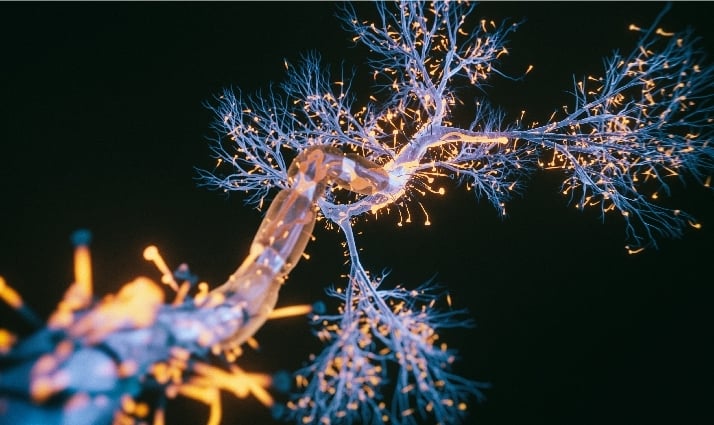Neuroscience, also called neural science, is the study of how the nervous system develops, structures and functions. The nervous system includes both the central nervous system, consisting of a brain and spinal cord, and the peripheral nervous system comprising the nerves that lie in the extremities (limb or appendage), muscles, and organs.
Read More
Neuro-interventional procedures are minimally invasive procedures performed to diagnose and treat conditions of the brain and spinal cord. Neuro-interventional procedures are used to diagnose and treat various conditions of the brain and spinal cord, including:
Stroke: A neuro-interventional procedure can be used to remove clots or restore blood flow to the brain in the event of an ischemic stroke.
Aneurysms: Procedures such as embolization or coiling can be used to prevent the rupture of an aneurysm, a weak or thin spot in a blood vessel that can lead to bleeding in the brain.
Arteriovenous malformations (AVMs): AVMs are abnormal tangles of blood vessels that can cause bleeding or other problems in the brain. Neuro-interventional procedures can be used to block blood flow to the AVM and prevent it from causing harm.
Brain and spinal tumors: Neuro-interventional procedures can be used to deliver therapeutic agents, such as chemotherapy or radiation, directly to the site of a tumor to improve the effectiveness of treatment.
Chronic pain: Procedures such as vertebroplasty or kyphoplasty can be used to relieve chronic pain caused by vertebral fractures or other spinal conditions.
Peripheral nerve compression: Procedures such as percutaneous nerve ablations can be used to relieve pain caused by peripheral nerve compression, such as in the treatment of trigeminal neuralgia.
These procedures offer many benefits over traditional open surgical procedures, including reduced risk of complications, shorter recovery times, and less discomfort for the patient. The choice of procedure will depend on the specific condition being treated and the individual patient’s needs.
A procedure that uses X-rays and contrast dye to visualize blood vessels and detect any blockages or abnormalities in blood flow.
A procedure that involves the delivery of a therapeutic agent, such as a coil or embolic material, to block blood flow to a specific area, such as a tumor or an aneurysm.
A procedure that involves the placement of a small metal mesh tube inside a blood vessel to keep it open and improve blood flow.
A procedure that involves the removal of a blood clot from a blood vessel, such as in the treatment of an ischemic stroke.
A procedure that involves the injection of bone cement into a vertebral body to stabilize it and relieve pain.
A procedure similar to vertebroplasty, but involves the insertion of a balloon into the vertebral body to create a cavity before filling it with cement.
A procedure that involves the placement of a stent in the carotid artery to prevent stroke by improving blood flow to the brain.
These procedures are performed using specialized neuro-interventional techniques and equipment and are typically performed under local anesthesia and conscious sedation. The choice of procedure will depend on the specific condition being treated and the individual patient’s needs.
There are several different types of neuro treatment, including medication, surgery, rehabilitation, and therapy.
Medications used to treat neurological disorders can include pain relievers, anticonvulsants, antidepressants, antipsychotics, and other drugs. The specific medication used will depend on the type and severity of the condition being treated.
Rehabilitation for neurological conditions can include physical therapy, occupational therapy, and speech therapy. The goal of rehabilitation is to help the patient regain function and improve quality of life.
Therapy, such as cognitive behavioral therapy, can be an important part of neuro treatment for some patients. Therapy can help patients manage symptoms and improve their ability to function in daily life.
The prognosis for patients with neurological conditions can vary widely, depending on the type and severity of the condition, as well as the patient’s overall health and response to treatment.
Yes, there are several treatments for neurological conditions that are in development, including new medications, surgical techniques, and rehabilitation approaches. Research is ongoing to improve our understanding of neurological conditions and develop more effective treatments
Early diagnosis and treatment of neurological conditions can be critical for improving outcomes and reducing the risk of complications. It is important for patients to seek prompt medical attention if they experience any symptoms of a neurological condition.





